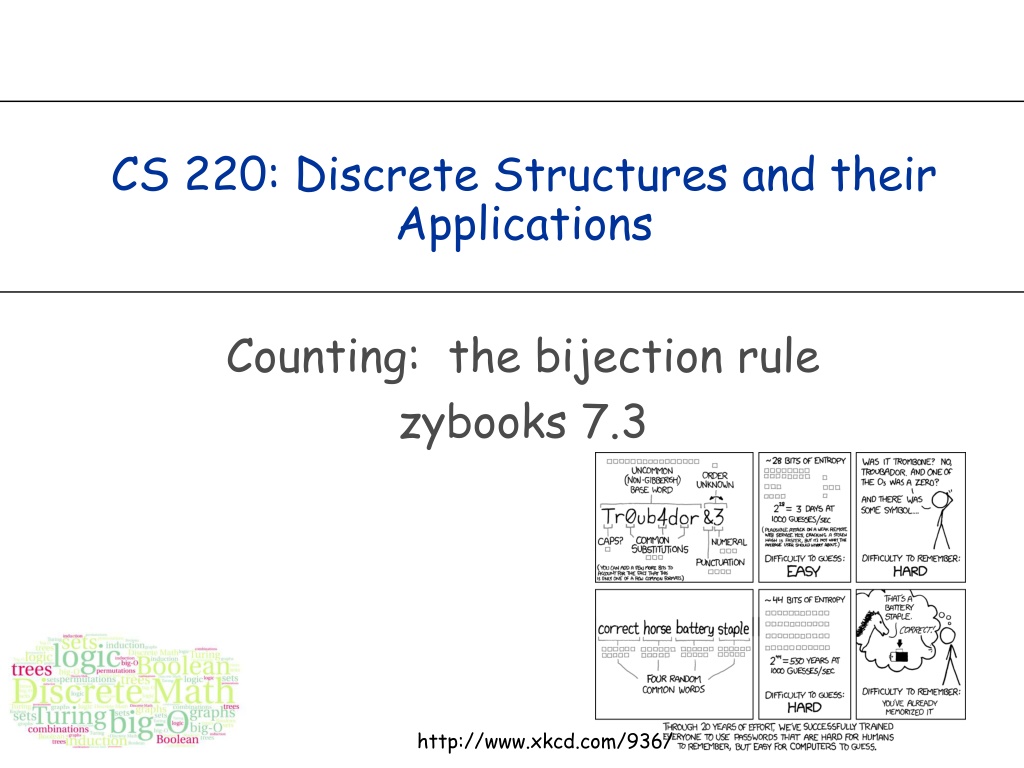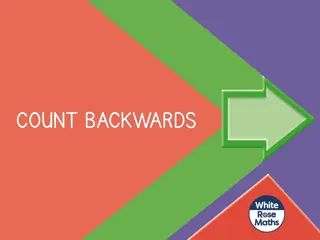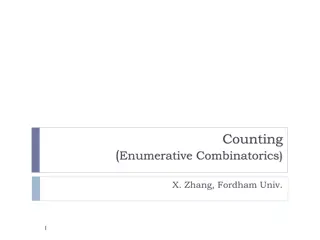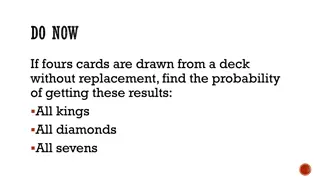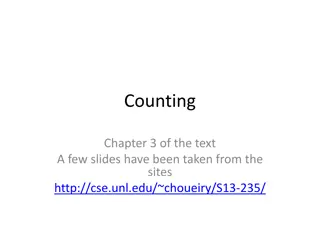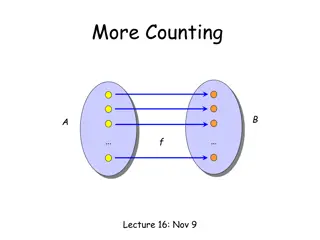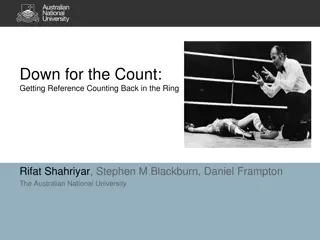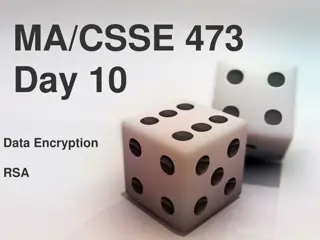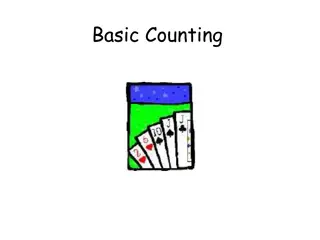Understanding Bijection Rule in Counting Subsets and Functions
Explore the concepts of counting subsets and functions, including injective, surjective, and bijective functions. Discover the bijection rule, which states that if there is a bijection between two finite sets, their cardinalities are equal. Learn about counting palindromes and the k-to-1 rule through engaging examples and visual explanations.
Download Presentation

Please find below an Image/Link to download the presentation.
The content on the website is provided AS IS for your information and personal use only. It may not be sold, licensed, or shared on other websites without obtaining consent from the author. Download presentation by click this link. If you encounter any issues during the download, it is possible that the publisher has removed the file from their server.
E N D
Presentation Transcript
CS 220: Discrete Structures and their Applications Counting: the bijection rule zybooks 7.3 http://www.xkcd.com/936/
counting subsets Show that the number of different subsets of a finite set X is 2|X|
counting subsets Show that the number of different subsets of a finite set X is 2|X| The correspondence between subsets and bit strings is a bijection
Functions (recap) A function f is said to be injective if and only if x1 x2 implies that f(x1) f(x2) for all x1 and x2 in the domain of f, i.e. unique f(x) for each x. A function f: X Y is said to be onto or surjective if and only if for every y in Y there is an x in X with f(x) = y, i..e. its range equals its target. A function f is a bijection, if it is both one-to-one and onto. The bijection rule Let S and T be two finite sets. If there is a bijection from S to T, then |S| = |T|.
the bijection rule The bijection rule Let S and T be two finite sets. If there is a bijection from S to T, then |S| = |T|. Example: Suppose that every person in a theater must submit a ticket to an usher in order to enter. One way to count the number of people in the theater is to count the number of tickets submitted.
counting palindromes If x is a string, then xR is the reverse of the string. For example, if x = 1011, then xR = 1101. A string x is a palindrome if x = xR. Let B = {0, 1}. The set Bn is the set of all length n bit strings. Let Pn be the set of all strings in Bn that are palindromes. (a) Show a bijection between P6 and B3. (b) What is |P6|? (c) Determine the cardinality of P7 by showing a bijection between P7 and Bn for some n.
the k-to-1 rule A group of kids at a slumber party all leave their shoes in a big pile at the door. How to count the kids? Count the shoes and divide by two. This assumes a well defined function that maps each shoe to the kid who owns it. This is an example of a k-to-1 correspondence: Let X and Y be finite sets. A function f:X Y is a k-to-1 correspondence if for every y Y, there are exactly k different x X such that f(x) = y.
the k-to-1 rule Let X and Y be finite sets. A function f:X Y is a k-to-1 correspondence if for every y Y, there are exactly k different x X such that f(x) = y. The k-to-1 rule. Suppose there is a k-to-1 correspondence from a finite set A to a finite set B. Then |B| = |A|/k
example Ten kids line up for recess: {Abe, Ben, Cam, Don, Eli, Fran, Gene, Hal, Ike, Jan}. Let S be the set of all possible ways to line up the kids. For example, one ordering might be: (Fran, Gene, Hal, Jan, Abe, Don, Cam, Eli, Ike, Ben) Let T be the set of all possible ways to line up the kids in which Gene is ahead of Don. Note that Gene does not have to be immediately ahead of Don. It's easy to count |S|. Computing |T| is harder.
example Ten kids line up for recess: {Abe, Ben, Cam, Don, Eli, Fran, Gene, Hal, Ike, Jan}. Let S be the set of all possible ways to line up the kids. For example, one ordering might be: (Fran, Gene, Hal, Jan, Abe, Don, Cam, Eli, Ike, Ben) Let T be the set of all possible ways to line up the kids in which Gene is ahead of Don. Note that Gene does not have to be immediately ahead of Don. Define a function f whose domain is S and whose target is T. Let x be an element of S, so x is one possible way to order the kids. If Gene is ahead of Don in the ordering x, then f(x) = x. If Don is ahead of Gene in x, then f(x) is the ordering that is the same as x, except that Don and Gene have swapped places. What does this tell us about |T| ?
Extension of Line up example Same 10 kids, but now let T be the set of all possible ways to line up the kids in which Gene is ahead of Don and Don is ahead of Abe. What is the size of T now? We are mapping the SET {Abe, Don, Gene} to the TUPLE (Gene, Don, Abe) There are 3! orderings of Abe, Don, and Gene Tuple = permutation Set = combination
